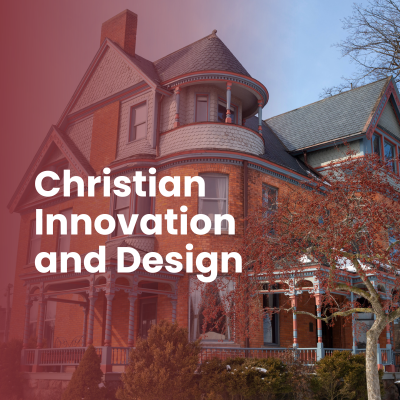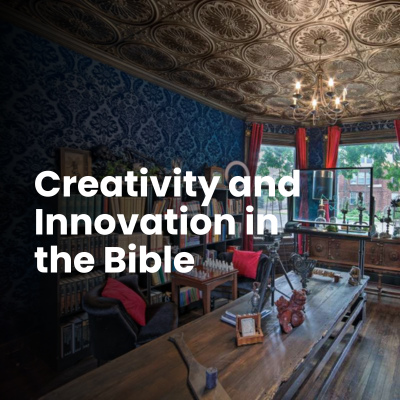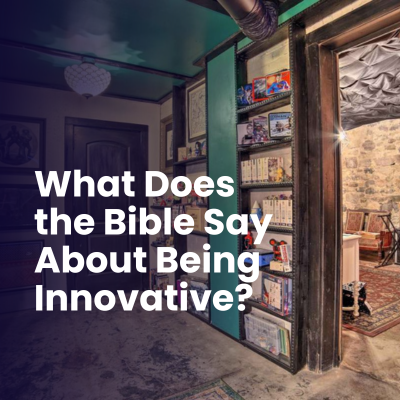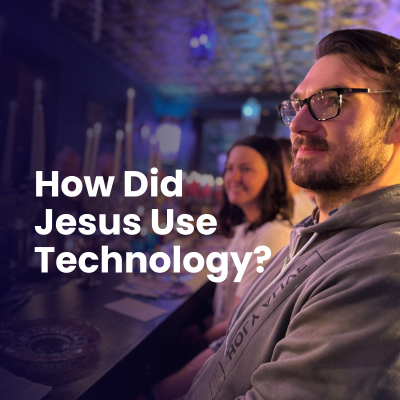This blog is part of a larger exploration concerning Christian Innovation and Design, within a section focused upon Design Thinking Tools and their application in Church ministry.
We’re going to respond to the common query “What are some examples of design thinking?” momentarily, but before we do it’s imperative that everyone understand that the best design thinking book concerning Christian ministry is likely “Then, Now, Next: a biblical vision of the church, the kingdom, and the future” by our very own Rev. Dr. David McDonald, founder of Fossores Innovation and Design. This book not only walks you through the process of intense, radical, human-centered design (particularly the section on Agents and Patients) but is absolutely littered with examples of innovative solutions to ministry problems—including liturgical, missiological, formational, and social examples of fresh ministerial expression.
What is the main goal of design thinking? A new solution to a ministry problem that is loved, emulated, and self-sufficient. At Fossores Innovation and Design, we rely on our four KPI (key performance indicators) to ensure all our projects undergo iteration, cultivate adoration, experience emulation, and are fully vested with sufficient compensation. To do so, we employ our D.R.E.A.M. Process, which undergirds the principles of design thinking specific to ministry.
* Delve into an NPO (need, problem, or opportunity) within either your church or your community. This can be something practical—like “How do we increase our Sunday visitor flow?” or “What can we do to help the homeless get adequate shelter?” —or something metaphysical—like “How can we help form healthy disciples?” or “How can we experience the presence of God more fully in worship?”. The point of “delving” is to identify as specific an NPO as possible and to frame it as a question, such that we can supply an answer at the end of the design-thinking process.
* Restrict the scope of our experimentation to fit our material, social, and schematic constraints. Material constraints include time, space, and money. Social constraints concern those issues that will be “costly” for your community (such as certain theological ideas that chafe, or perhaps the amount of favors you’ll need to call in, or the amount of energy you’ll need to expend persuading people to change). Schematic constrains include deciding whether this is a one-time event or an event to be repeated; whether this will be on/offsite; whether this will be primarily for the church (insiders) or the community (outsiders).
* Explore the related SIMs (stories-images-metaphors) in both scripture and culture. Here we want to avoid looking simply for Bible verses that support our efforts, but instead look for the SIMs that will allow us deeper, more holistic spiritual insights. Likewise, we don’t just want to find cultural fads and copy them, but to find specific cultural trends, memes, and symbols that reveal the spirit of the times. Finding 10 SIMs each from scripture and culture will give us a broad pallet of ideas which we can then compare and contrast to identify overlap; those overlaps will be the raw materials with which we compose our proposed solutions.
* Attempt several prototypes; meaning, mock up—with as much detail as possible—a rough draft of what a solution could be. For example, if you’re trying to answer the question “How can we encourage more bodily, kinesthetic, worship in our liturgy?” then you’d want to do things like: draft a few written liturgies that rely on the SIMs above; create models of the worship space (using cardboard or Lego, etc) to see what the opportunities/obstacles might be; host beta-test events where small groups of people participate in a variety of proposed activities and observe their behavior and ask for their feedback, etc. The point it, you want to actually DO and TEST your solution in a rough-and-ready environment before trying it out for real in your church. We recommend going through four versions of each prototype. Version 1 is a quick-and-dirty attempt just to see where the obvious wins/misses are. Version 2 makes significant changes, incorporating what you’ve learned from Version 1. Version 3 and 4 are largely improvements on Version 2, since that’s where the biggest “aha” moments tend to arise. We recommend limiting the iteration process to Version 4 in order to set healthy expectations among team members and protect against discouragement and perfectionism.
* Materialize the proposed solution in your space with your people and try it out! Measure the results and honestly ask whether or not you’ve addressed your stated NPO. Then, return to the “Attempts” until satisfied with your solution.
What happens in the test stage of design thinking? People often want to know the answer to this question, and the related question “In which stage of design thinking will you build a representation?” but the truth is that THE WHOLE PROCESS is focused on people and prototypes.
In fourth stage—“attempts”—we take our clients through a series of prototypes that continually iterate a proposed solution. As we stated above, this entails a series of experiments that incorporate feedback and make adjustment after adjustment after adjustment to ensure that our finished product is viable, pleasurable, and meaningful. And while we typically—but not exclusively—design prototypes (a.k.a. ‘representations’) in this fourth stage, the truth is that we’re prototyping all along, such that the representations we craft in stage four are very unlikely to be our first ‘kick at the can’, since prototyping is embedded in every stage of the process.
Every part of the 5 step strategic design process keeps the user at the center. Again, the 5 stages of design thinking, specific to ministry, are D.R.E.A.M: delve into a ministry NPO, consider your restraints, explore scripture and culture, craft several attempts at a solution, materialize your proposal. These stages are all meant to serve the sacred self-interest of each participant in our programs/experiences/offerings, allowing our people to more deeply enjoy the presence of God and walk in the way of Jesus.











Leave a Reply